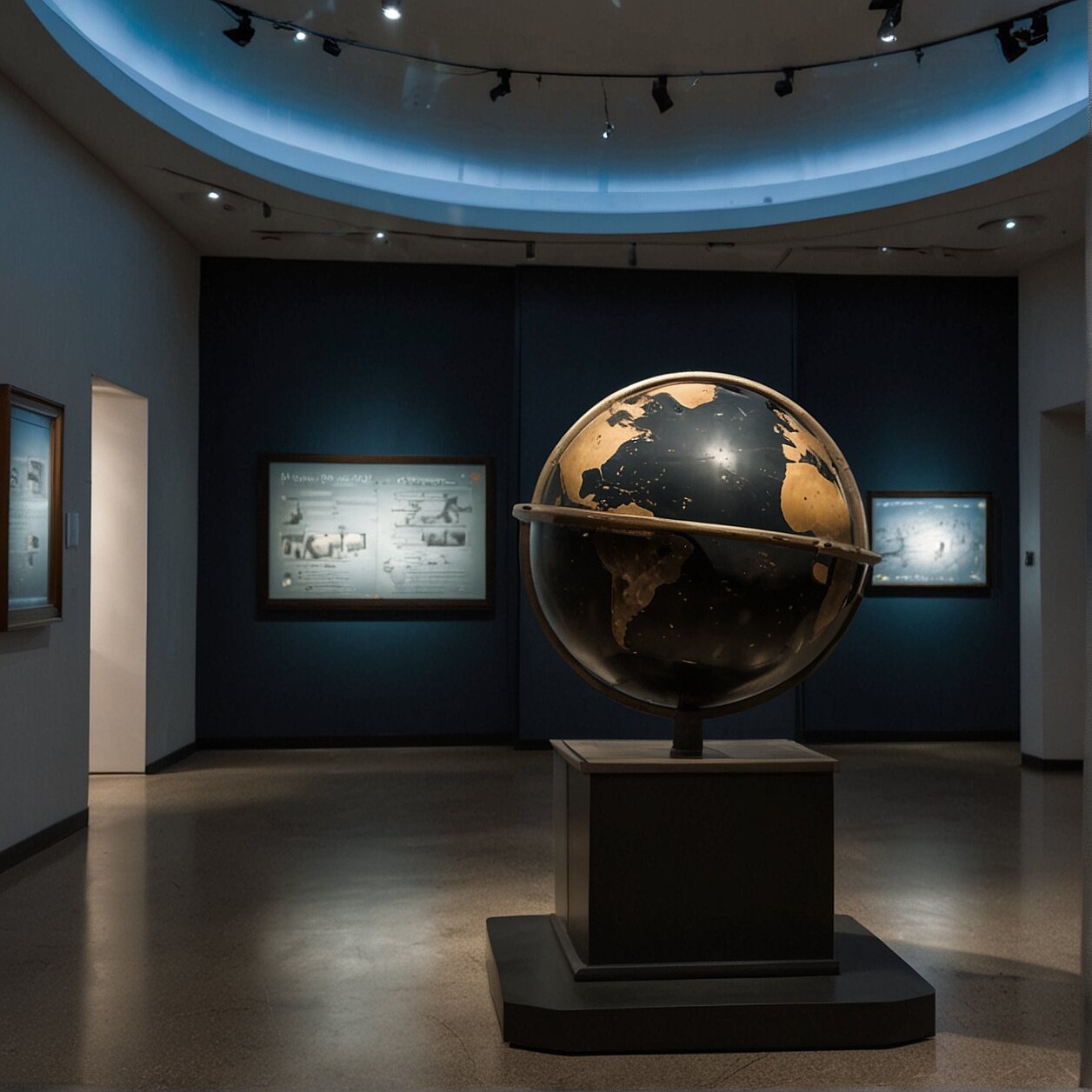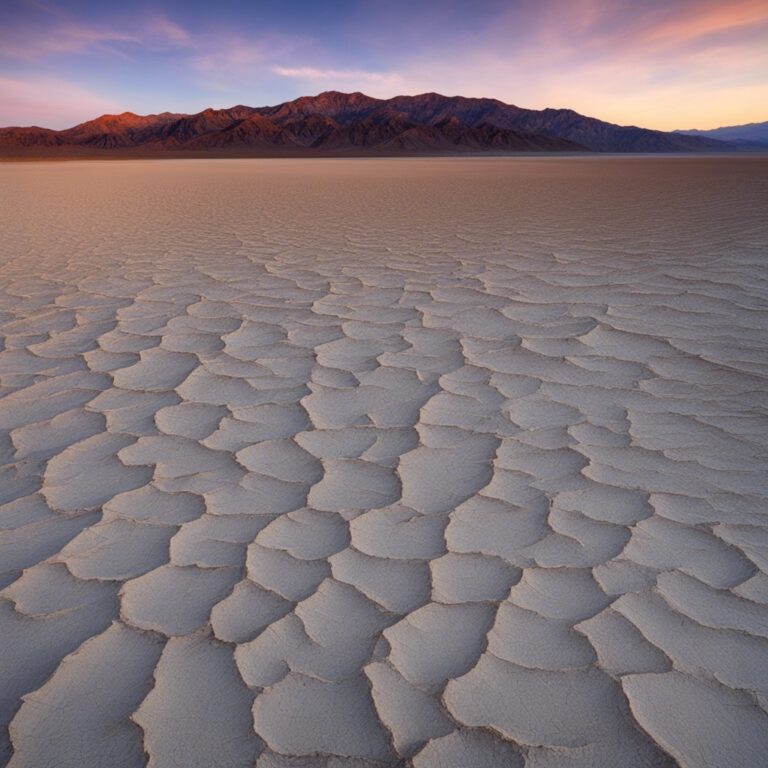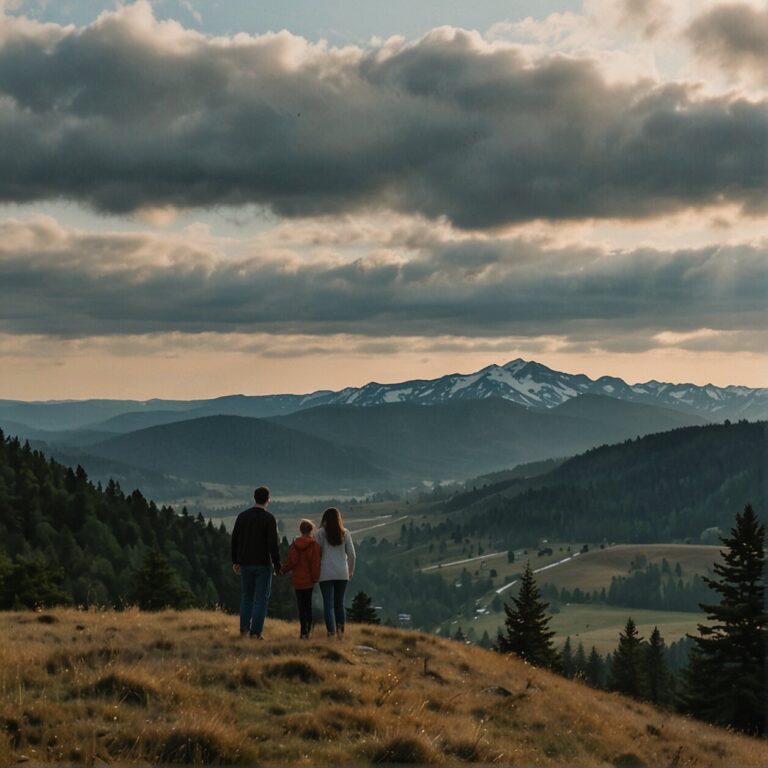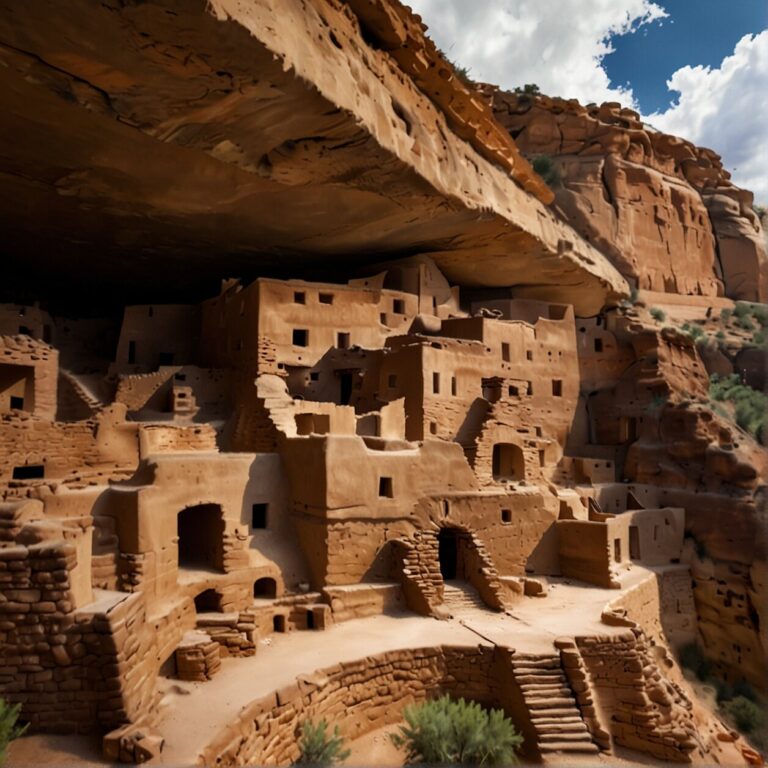The Astro-Trail of America: Visiting U.S National Observatories
Have you ever looked up at the night sky and wondered about the mysteries it holds? Well, you’re not alone. From ages past until today, mankind has gazed to the stars in awe and curiosity. Devoted to unraveling these cosmic questions are the spectacular National Observatories scattered across the U.S., giving us a peek into the great beyond. From the azure skies of Arizona to the lush landscapes of Hawaii, each observatory offers a unique chance to embark on an awe-inspiring journey through the stars.
“To confine our attention to terrestrial matters would be to limit the human spirit.” – Stephen Hawking
Whether you’re an astronomical aficionado, an aspiring astrophysicist, or simply a starry-eyed enthusiast, the U.S. observatories offer mesmerizing experiences for all. Let’s embark on an exploratory journey across these celestial citadels, peek into their hallowed halls filled with massive telescopes, and dive into the incredible experiences each has to offer.
Each of these observatories comes with its own unique charm and specialties:
- The Kitt Peak National Observatory in Arizona holds the most diverse collection of astronomical instruments in the world.
- The Mauna Kea Observatories in Hawaii provides arguably the best terrestrial viewing conditions on planet Earth.
- A trip to the historic Mount Wilson Observatory in California allows you to walk the same path as Einstein and Hubble.
- If cutting-edge technology piques your interest, the Green Bank Observatory in West Virginia, home to the world’s largest fully-steerable radio telescope, is a must-visit.
Regardless of where your journey takes you, you’re sure to leave with a sense of wonder, newfound knowledge, and memories to last a lifetime.
Exploring the Universe: The Beauty of U.S. National Observatories
Every U.S. national observatory has its own charm and allure, boasting unique experiences that appeal to devoted stargazers and curious novices alike. From high-powered telescopes and solar viewing instruments to immersive planetarium shows and educational exhibits, here’s an insight into the remarkable features of a few not-to-miss observatories.
National Optical Astronomy Observatory: The NOAO, located in Arizona, hosts some of the best telescopes in the world. As you peer into the cosmos, you’ll gaze at beautiful celestial bodies from constellations to distant galaxies. It’s an ideal destination for indulging in the wonders of the universe, sans the hindrance of city light pollution.
National Solar Observatory: Ever wanted to watch the sun without risking your sight? The National Solar Observatory in New Mexico equips you to do just that with their advanced solar telescopes. Safely observe solar flares or learn about the sun’s magnetic field–it’s a fiery fiesta for your curious mind.
U.S. Naval Observatory: One of the oldest observatories in the U.S., Washington D.C’s Naval Observatory takes you on a journey through time. It regulates the nation’s Master Clock and navigational star charts. Remember, this isn’t open to the public daily, but keep an eye out for their ‘open house’ events!
University of Illinois Astronomical Observatory: Nestled in a higher-educational environment, this observatory offers unforgettable sky-gazing experiences. There’s a particular emphasis on understanding the science behind astronomy and giving college students a chance to conduct research–making it a fetching learning destination.
National Radio Astronomy Observatory: This unique observatory in West Virginia introduces you to the unseen universe. Dive into the mystical world of radio waves from far-off astronomical phenomena, and witness some of the world’s largest steerable radio telescopes in action.
Each of these observatories provides an unparalleled chance to discover the mysteries of the heavens. Visitors leave with a sense of awe and a greater understanding of our place in the universe. Secure your tickets, grab your binoculars, and get ready for an adventure that’s truly out of this world!
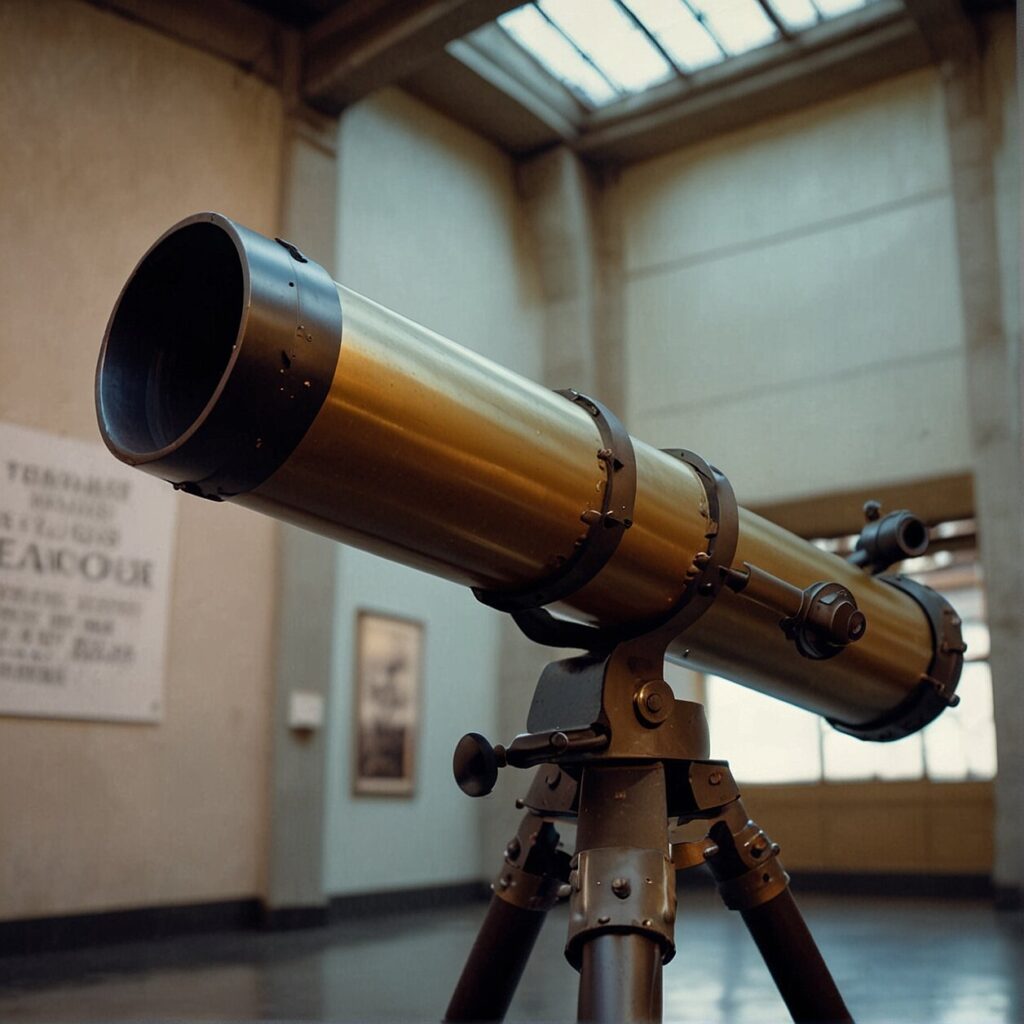
Planning Your Astro-Adventure: A Guide to Visiting U.S. National Observatories
Ready to start your astro-adventure? There’s no better place than the U.S. National Observatories. Each observatory offers unique experiences and opportunities to visit the stars, from guided telescope tours to breathtaking night sky views. Here, we delve into a few that might ignite your cosmic curiosity and inspire you to explore further.
The U.S. Naval Observatory: A Voyage Across the Night Sky
Nestled in the heart of Washington, D.C., the U.S. Naval Observatory (USNO) is not only a hub for timekeeping and celestial navigation but also offers you an opportunity to traverse the stars. Although visitor operations are currently on hold due to Covid-19, once reopened, you can take voyeuristic voyage among the night’s sky’s marvels.
A Daytime Delight at the National Solar Observatory
If your interests lean more towards our solar system’s superstar, the National Solar Observatory (NSO) might be the perfect fit. Located in Boulder, Colorado, the NSO uniquely specializes in solar research. Indulge your curiosity about the sun and its behavior during one of their open house or solar star parties, daylight events that offer a unique stargazing twist.
Southern Shimmer: The National Optical Astronomy Observatory
For a more southern excursion, turn your gaze towards the National Optical Astronomy Observatory (NOAO). The NOAO provides observing facilities where you can see stunning astronomical events in the clear desert skies. Beyond the public telescopes, you can also enjoy the educational programs on offer.
Indulging in Inspiring Interstellar Insights at Brooks Astronomical Observatory
The Brooks Astronomical Observatory, based in Michigan’s Oakland University, is an invaluable resource if you’re passionate about astrophysics. The observatory arranges frequent public viewing nights where you can experience celestial magic firsthand. Plus, you must not miss out on their engaging astronomy classes!
We hope this brief overview triggers your enthusiasm for cosmic exploration. Remember, whichever observatory you choose to visit, the main goal is to have fun and enjoy the spectacular cosmic show on offer. So, pack your curiosity, open your mind to the extraordinary, and get ready for the astro-adventure of a lifetime!
Stargazing 101: What to Expect When Visiting a National Observatory
As you step across the threshold of a U.S. national observatory, know that you’re about to embark on an exhilarating journey that transcends our humble earthly existence. From the moment you arrive, you are coaxed into an environment that pulsates with scientific inquiry and celestial curiosity.
At the heart of most observatories, you’ll encounter colossal telescopes—modern giants that probe the unreachable depths of the universe. Take, for instance, the Nice Observatory, which is home to an impressive 100-inch telescope. A guided tour will usually provide the opportunity to get up close and personal with these magnificent instruments of discovery, learning not just about their mechanics, but also about the past and ongoing research they facilitate.
Most observatories, such as the Mountain Skies Observatory, offer telescope tours so you can stargaze to your heart’s content. You may witness celestial objects like nebulas and galaxies millions of light years away, or zoom into our neighboring planets for a detailed glance at their surfaces. Prepare to be awe-struck.
Yet, it’s not all about nighttime explorations. Observatories like the National Solar Observatory offer daytime activities too. You could be observing sunspots or built up walls of plasma on the sun – known as prominences – in real-time.
Some observatories also house astronomical museums that feed your curiosity. The exhibits typically feature photographs of space obtained either by on-site telescopes or from international space initiatives. They may also shed lights on different astronomical phenomena or illustrious astronomers who have made major scientific breakthroughs.
It’s not always about visuals though — some observatories like the Orion Ranch Observatory integrate auditory experiences to enrich your journey. You might find yourself listening to the otherworldly echoes of distant cosmic bodies recorded through radio telescopes. Imagine hearing Jupiter’s stormy atmospheres or the crackling sounds of solar flares exploding on our sun!
And don’t forget about the visitor centers, like the one at the W.M. Keck Observatory. These spaces often host intriguing presentations and lively Q&A sessions with astronomers, providing a perfect opportunity for you to delve deeper into the mysteries of the cosmos.
In conclusion, expect a national observatory visit to be a truly unique fusion of education, adventure and wonderment. Ready to reach for the stars?
Observatory Etiquette: The Do’s and Don’ts When Visiting National Observatories
Visiting a U.S. national observatory is a thrilling experience, but there are guidelines that everyone must follow to respect the space and fellow stargazers. It’s vital to brush up on these dos and don’ts, ensuring everybody has a memorable and awe-inspiring journey through the cosmos.
The Do’s
- Respect Red Lighting: Most observatories use red light at night to maintain dark adaptation for our eyes. Choose a red flashlight over a regular one or adjust your electronic device’s lighting to red to reduce light pollution.
- Deliver Silence: Keep noise to a minimum. Remember, people are listening for celestial sounds as much as observing the sights.
- Follow Rules: Some observatories may prohibit certain items such as food, drink, or large backpacks. Be sure you’re familiar with the rules before your visit.
The Don’ts
- Avoid Flash Photography: Avoid using flash when taking pictures, as it can disrupt others’ viewing and affect your night vision.
- Don’t Touch Equipment: Unless given permission, refrain from touching telescopes and other equipment. They are highly tuned scientific instruments, and even slight adjustments can disrupt their alignment.
- Littering: Leave the observatory as clean as when you arrived, respecting both the environment and the next group of curious, budding astronomers.
Observatories are unique hubs of knowledge and fascination. By adhering to these etiquette rules, you contribute to maintaining the sanctity and vibrance of these celestial spaces, making the experience enjoyable for all.
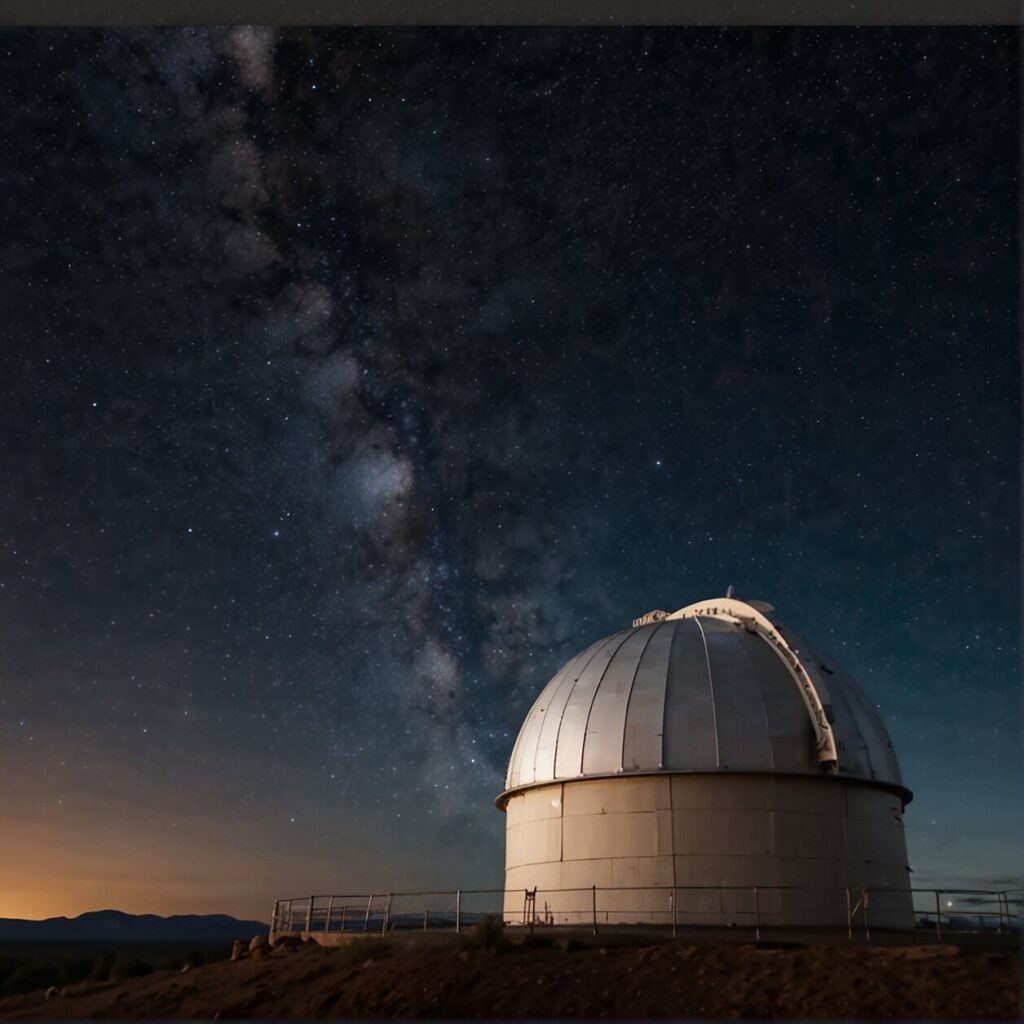
Space-Time Continuum: Operating Hours and Best Times to Visit
Embarking on a remarkable journey to the stars involves a fair bit of planning with regard to your visit times, after all, strategic timing can greatly enhance your stargazing experience. Let’s dive deeper into the best visiting hours for multiple U.S national observatories that will ensure you stellar views and intriguing interactions.
Night Owls’ Paradise: The W.M. Keck Observatory
For velvety night skies scattered with countless cosmic diamonds, plan your adventure to the W.M. Keck Observatory. Located near the summit of Mauna Kea in Hawaii, it offers stargazers the majestic dance of celestial bodies that commences after sunset. The Visitors Center operates from 10 AM to 10 PM, providing ample time to learn about the observatory’s research before embarking on a stargazing session.
Solar Splendor: Griffith Observatory
If the mysteries of our home star, the Sun, fascinate you, swing by the Griffith Observatory in Los Angeles anytime from 2 PM to 10 PM. Here, the afternoon brings an incredible opportunity to witness safe solar viewing. Staff-led talks that take place in the early evening hours often offer exclusive insights into the Sun’s dynamic nature.
Anytime Marvel: Mauna Kea Visitor Information Station
At an elevation of nearly 9,200 feet, the Mauna Kea Visitor Information Station offers outstanding views of the stars regardless of when you choose to visit. Accessibility is a focal point here, with operating hours that run from 9 AM to 10 PM daily. The Mauna Kea offers stargazing programs, educational programs, and astronomy workshops amongst its offerings.
Guided tours are often available on weekends at two slots, 11:30 AM and 1:00 PM, making these slots ideal for visitors keen on delving deep with a seasoned guide leading the way.
Please note that hours are subject to change based on weather conditions and other observatory events. Always double-check the operating hours before planning your visit. Last, but just as important, remember that nighttime stargazing depends heavily on the lunar cycle. A night close to the new moon phase typically allows for the clearest views of starry constellations and distant galaxies. Happy star-gazing!
FAQ’S
Ready to embark on your own cosmic journey but have a few questions about the trip? No worries! Here’s a helpful section where you’ll find the answers to frequently asked questions about visiting U.S. national observatories. This guide aims to prepare you for an awe-inspiring exploration where you’ll brush shoulders with celestial bodies as you roam through the vast, starlit wonder that is space.
How can I plan a trip to visit U.S. national observatories?
Planning a trip to visit U.S. national observatories requires a blend of logistical organization and a sense of adventure. Your first step should be to decide on which observatory, or observatories, you’d like to visit. There’s a multitude of exciting options including the U.S. Naval Observatory, the National Solar Observatory, or the awe-inspiring Griffith Observatory, just to name a few.
Once you’ve nailed down your destination, it’s time to do a bit of research. Check out the observatory’s official website for details on opening hours, any entrance fees, special events, and whether you need to reserve ahead for any exclusive telescope viewings or tours. Learning more about the observatory before your visit will not only make your trip smoother but also optimize your time there.
You should also see if the observatory offers any educational programs or exhibits during your visit. This could significantly enhance your experience – you will not only get to observe the stars but also understand the mysteries they hold.
Lastly, don’t forget to check the weather forecast. While an observatory visit can be thrilling in any weather, a clear sky will definitely give you the best conditions for stargazing.
With careful preparation and anticipatory excitement, your upcoming visit to any of the U.S. national observatories could indeed become a journey of a lifetime.
What are some tips for first-time visitors to U.S. national observatories?
Embarking on your inaugural journey to a U.S. National Observatory is a thrilling endeavor awaited with much anticipation. Here are valuable tips that will ensure this adventure becomes a cosmic delight that you’ll want to repeat in a heartbeat.
Firstly, remember that the weather plays a significant role in optimal stargazing conditions. So, it’s vital to check the local forecast and moon phase before your visit. A clear, moonless night is the best time to observe those distant galaxies and nebulae.
Secondly, turn off any bothersome artificial lights. Natural darkness duplicates the conditions astronomers operate under, enhancing your star viewing experience. So, ditch the flashlights and allow your eyes to adjust to the dark beauty and wonders of the celestial panorama above.
And last, but not least, keep respectful silence to allow everyone to savor the serene beauty of the cosmos and the quintessential joy of spotting that elusive star or constellation. Besides, some observatories might host ongoing research; hence, maintaining a quiet environment becomes even more crucial.
Equip yourself with a star map for the relevant month and a red flashlight for protecting your night vision. Clearly comprehending their functioning before you arrive would be a helpful move. Knowledge about constellations and their positioning may transform your maiden astro-adventure into an enlightening and fulfilling experience.
Eager to soak in more celestial knowledge during your visit? Do take advantage of any guided tours on offer. These tours, typically led by seasoned astronomers, are treasure troves of interesting space facts and a brilliant opportunity to quench your cosmic curiosity.
Remember, the night can get chilly while you’re out peering into the universe. So, dressing in warm, comfortable layers is strongly advised. Also, pack some refreshments and a thermos of hot coffee or cocoa to keep cozy as you wait for a shooting star to fly across the sky.
Lastly, don’t forget your binoculars – they’re not just useful for birdwatching! Binoculars can bring many faint or small celestial objects into clear view, enhancing your observation experience.
Armed with these handy tips, you’re all set for an unforgettable stargazing adventure at any U.S. national observatory.
Are there guided tours available at U.S. national observatories?
Yes, indeed! In fact, many U.S. national observatories extend the opportunity to embark on guided tours. These tours serve as insightful and enlightening experiences that allow visitors a peek into the universe that extends beyond our Earth. While some observatories prefer pre-scheduled tours, others freely welcome walk-ins. However, it’s always a good idea to confirm ahead of your visit.
For instance, the W.M. Keck Observatory Visitors Center provides a spectacular learning experience. Guided tours there enable you to delve into the workings of one of the world’s largest astronomical instruments, mega telescopes that peer into the galaxy, revealing celestial wonders. Make sure to reserve your spots in advance, as the tours are mainly appointment-based.
Another popular destination, the Griffith Observatory hosts public telescope viewing events, alongside an array of exhibits. Here, trained guides lead you across the rooms, explaining the scientific principles behind the observatory’s celestial facilities.
Equally captivating is the University of Maryland Observatory, whose open houses are guided by astronomy professionals. Designed to engage, educate and inspire, you might also catch a riveting presentation from researchers uncovering the secrets of space.
Remember, each observatory might have unique rules and guidelines regarding their guided tours. As such, it’s always advisable to check the individual websites of these observatories or contact them directly to get the most current information.
What should I bring with me when visiting a U.S. national observatory?
When embarking on your astronomical adventure to a U.S. national observatory, being prepared is key. There are several essentials you should consider packing to ensure a satisfying and comfortable visit.
- Warm Clothing: The weather can often be surprisingly chilly, especially at night, even during the warmer months. Think about dressing in layers to accommodate fluctuating temperatures.
- Red Flashlight: Your night vision won’t be greatly impacted by red light, which makes it an ideal choice for perusing star maps and not disturbing others around you. If your flashlight doesn’t have a red mode, consider covering it with red cellophane.
- Star Maps: You might want to bring along a paper star chart or a smartphone app to help identify celestial objects. Most U.S. observatories are in dark sky areas, so expect to see more stars than you ordinarily would.
- Binoculars: Although large telescopes will be provided, having your own binoculars can enhance your experience, allowing you a fantastic view of larger constellations, the moon, and other objects in the night sky.
- Camera: For the photography enthusiasts, bringing a high-quality camera can allow you to capture your own astrophotographs. Do remember to ensure flash is disabled to avoid disturbing others’ dark-adapted eyes. It’s also worth noting that some observatories have restrictions against flash photography.
- Comfort Items: Depending on the observatory and its facilities, you may also want to bring a blanket to sit on and snacks or drinks (avoid alcoholic beverages as they can impair your night vision).
In addition to your conveniences, always remember to bring an open mind and an appetite for knowledge, as the Universe has endless wonders in its vastness to unravel.
What safety measures are in place at U.S. national observatories?
When you visit a U.S. national observatory, you can rest assured that your safety is a top priority. Each observatory implements a series of safety protocols to ensure the well-being of its visitors.
For starters, most observatories, including the National Solar Observatory and the U.S. Naval Observatory, have strict rules about night-time lighting. To protect your night vision and prevent light pollution that can interfere with observations, you’re generally asked to use only red-tinted flashlights after dusk. Remember, astronomy is a dark sky affair!
Moreover, U.S. observatories frequently sit in remote or high-altitude locations. For instance, the esteemed Mauna Kea Observatory is perched at an altitude of 13,796 feet. Conditions can be challenging and altitude sickness is possible. As a precaution, visitors are advised to take time to acclimatize before ascending, hydrate adequately, and heed advice from the trained personnel.
Weather conditions can also change rapidly, making roads potentially hazardous. Always pay attention to weather advisories and understand that access may be limited or curtailed due to severe weather. Often times, observatories have tire chains available during winter months in case of snow or ice, proving they leave no stone unturned in ensuring your safety.
Lastly, it’s worth mentioning that observatories regularly undergo safety audits and have first aid and safety officers on-site, alongside comprehensive emergency plans. So, as you look up to the stars, you can do so with complete peace of mind that you are well cared for.

